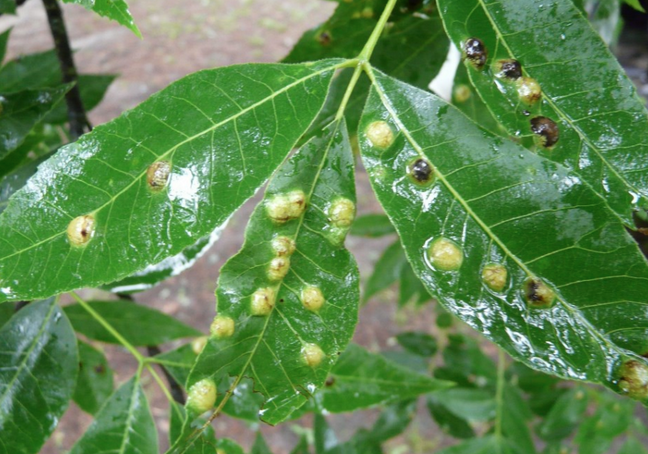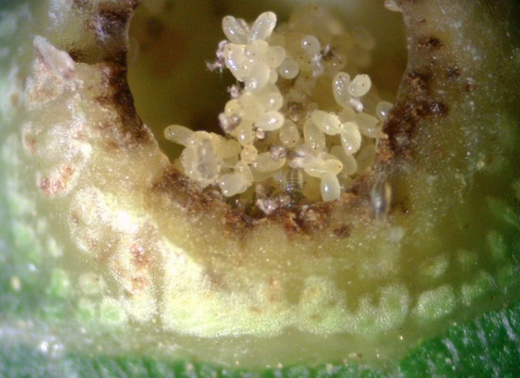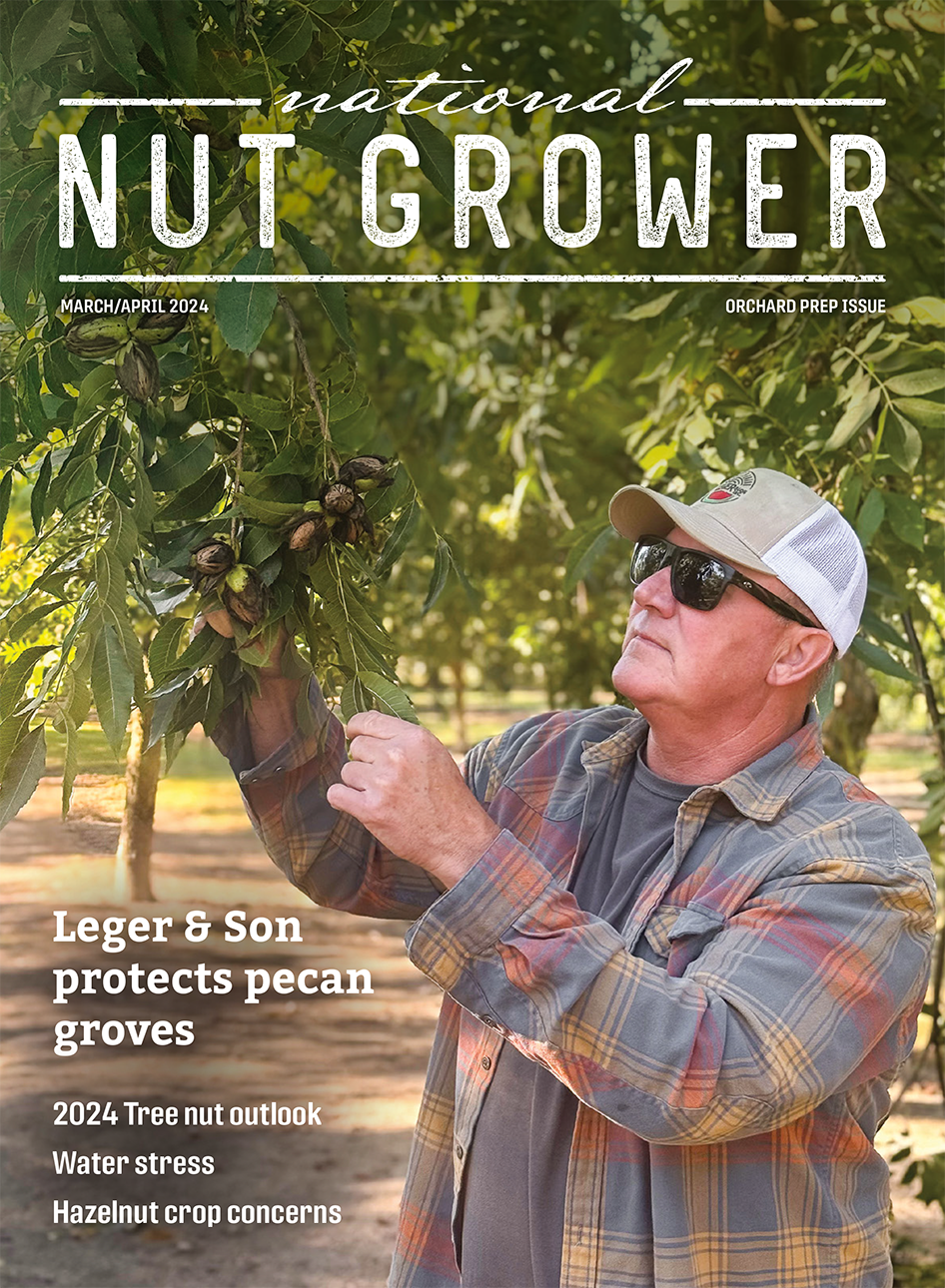
Mar 31, 2022Pecan phylloxera update for Georgia
Tattnall County is home to 7,000+ acres of pecan orchards in commercial production. Our growers will face a variety of challenges this coming up year. With bud-break just around the corner, the calls concerning pecan insect pests are soon to come in. Some of the issues that may be raised are ‘warts’ seen on the leaves. These spots will be raised and have a wart-like appearance, and can have a yellowish-green tint.
These symptoms let us know that pecan phylloxera are present in the orchard and actively feeding.
Although there are a few different species of phylloxera, I am discussing the pecan leaf phylloxera, Phylloxera notabilis, as it is most commonly seen in our orchards. The pecan leaf phylloxera is a tiny aphid-like insect that feeds on the foliage of mature pecan trees. While we most commonly observe this pest on mature trees, it can also be found feeding on nursery and young trees.
These insects are incredibly small making them difficult to see with the naked eye, but the damage they cause is not so small. The feeding of this insect causes an abnormal growth on the new leaf tissue resulting in a prominent gall to appear on the leaf. These galls will appear as wart-like, and up to 10 can be found on each leaflet.
Overwintering eggs will begin to hatch during the first week of April and continue until the first of May. The newly hatched stem mothers will crawl to the expanding leaves, where they settle down to begin feeding. The feeding causes the rapidly growing gall tissue, which will then enclose the stem mother within the gall. By mid-April the stem mother will mature and begin to lay eggs inside the gall. The gall will enlarge overtime as more phylloxera hatch inside, and by mid-May the matured phylloxera emerge. They will then crawl to another spot on the leaf to begin a new generation.

Light populations are most likely going to be of little consequence. However, each gall results in dead leaf tissue and numerous galls can cause premature leaf shedding. Phylloxera become troublesome in an orchard when left alone for many years. If the species of Phylloxera becomes “stem phylloxera,” damage can become more serious.
If your orchard is continually infested with phylloxera, your trees should be sprayed right at budbreak. This timing is critical because once galls are formed, no insecticide can penetrate the leaves.
What insecticide is best for control? Imidacloprid is recommended for controlling phylloxera due to its systemic activity. One might ask if we can apply imidacloprid through irrigation as we do with black pecan aphid. This was tested back in 2015 by Andrew Sawyer, then Thomas County Ag Agent and Dr. Will Hudson, pecan entomologist.
Imidacloprid was drenched around infested pecan trees in December, January, February and March with no difference in control for phylloxera. Though imidacloprid is effective on pecan phylloxera, these large trees are not able to transfer the insecticide to the buds before budbreak. This is why our best option is a foliar spray of imidacloprid at budbreak. This timing is difficult as pecan varieties experience budbreak at different times.
With this being said, leaf phylloxera is typically of minor economical importance in our orchards in most situations. Another species known as the pecan stem phylloxera can be a more severe and damaging pest, but unlike the pecan leaf phylloxera, it is not commonly observed.
Galls on mature pecan leaves from pecan leaf phylloxera. Once galls form, insecticide cannot control the insects. Photo: Andrew Sawyer, University of Georgia







